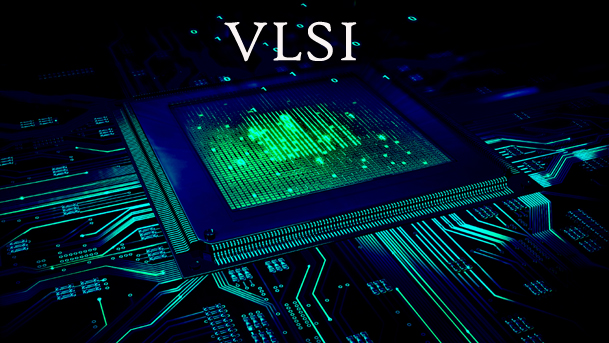
VLSI Technology
What is VLSI technology?
The technique of building an integrated circuit by putting millions of MOS transistors onto a single chip is known as very large-scale integration (VLSI).
The driving force behind the introduction to VLSI was the invention of the transistor. Firstly, what are electronics? Electronics primarily deals with circuits. It includes both passive and active components. Initially, the first components that were used in electronic circuits were made up of vacuum tubes; they were called the discrete components. Components were later made up of semiconductors with the arrival of the SSD, or the Solid State Device. Vacuum Tubes had to be discarded due to their size and space occupancy. They were also slow and consumed a lot of power.
The Integrated Circuit
An integrated circuit, sometimes known as a monolithic integrated circuit, is a collection of electronic circuits mounted on a single compact flat piece of semiconductor material, most commonly silicon. A little chip has a large number of tiny MOSFETs. The Integrated Circuit consists of one chip, where all the passive and active components were placed. Initially, only a few transistors were being put on an IC. With the advance in technology, however, more and more components had to place on the IC.
The devices became complex, the number of circuits became more confusing and bulky. A new technology called the Integration Technology came into existence which helped maintain the physical size of the IC, but also include more and more components. The IC’s were categorizes depending on the number of components it could hold. They are:
- SSI (Small Scale Integration) – Around a maximum of 100 transistors can fabricate on one single chip. Gates and flip-flops are prime examples of SSI’s.
- MSI (Medium Scale Integration) – 100-1000 transistors could now accommodate on one single chip, microprocessors for example.
- LSI (Large Scale Integration) – Around 10000 transistors can place on a single chip, for example, RAM, ROM, 8-bit Microprocessors.
- VLSI (Very Large Scale Integration) – Devices like 16-32 bit microprocessors can have up to 1 million transistors on a single chip.
- ULSI (Ultra Large Scale Integration) and GLSI (Giant Large Scale Integration) – For special purpose registers and embedded systems.
Advantages of VLSI and its learning:
- Size of circuits is reduces.
- VLSI has a lot of job inflow. A lot of VLSI experts are hiring with a handsome salary. Join top VLSI institutes in Bangalore to become a professional VLSI engineer.
- VLSI occupies a relatively low area.
- Discrete components use a lot of power. VLSI uses much lower power.
- The use of VLSI in circuits has a high level of reliability.
- Components operation speeds are rapidly rising.
- The device’s overall cost is now reduced.
Uses of VLSI:
1. Digital Signal Processing – Used primarily in speech processing.
2. Commercial Electronics – VLSI technology may now be found in everyday home objects, making the task easier.
3. Medicine – Medicine is perhaps the most important field of learning. VLSI helps make medical electronics components.
4. Automobiles – Used in safety components like ABS (Anti-lock Braking System) in automobiles.
Voice and Data Communication Networks
Conclusion:
Many businesses are now looking for a skilled VLSI specialist to collaborate with. The pay is good, and there is a lot of demand for VLSI expertise. To become the top VLSI engineer in the world, you must possess the appropriate skill set. Joining the best institute for VLSI training in Bangalore is crucial if you want to climb higher into the IT ladder.





